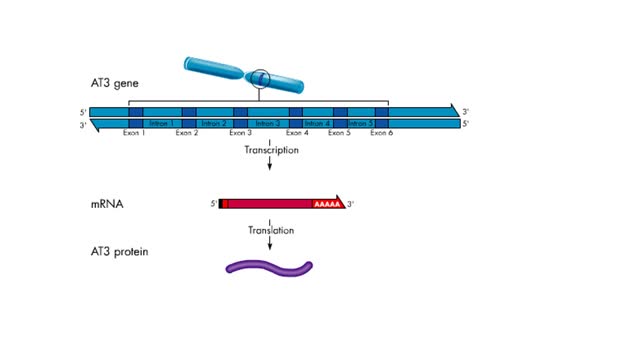Search Results
Results for: 'mitochondrial membranes'
Mitochondrial Structure & ETC Protein Complexes (Protein Complexes and Electron Transport)
By: HWC, Views: 10929
The energy carrying molecules, NADH and FADH2, that were generated in glycolysis and the Krebs cycle, now are processed in the mitochondria where their high energy electrons are deposited in an electron chain complex located in the inner mitochondrial membranes. These high-energy electrons now dr...
Functional zones in a mitochondrion
By: HWC, Views: 9188
A mitochondrion has a double membrane system. The outer membrane faces the cytoplasm. The inner membrane divides the organelles interior into two compartments. The enzymes that carry out the second stage reactions are in the semifluid matrix inside the inner compartment. Embedded in the ...
Transcription - Introns and exons
By: HWC, Views: 8343
In most eukaryotic genes, coding regions (exons) are interrupted by noncoding regions (introns). Exon - RNA sequences in the primary transcript that are found in the mRNA. Intron - RNA sequences between exons that are removed by splicing. During transcription, the entire gene is copied ...
Types of synapses - electrical & chemical
By: HWC, Views: 11423
• Neurons communicate with one another or effector cells via synapses that allow information to be filtered and integrated. • The two types of synapses are: • electrical • chemical. • Electrical synapses, also known as gap junctions, contain many ion channels (connexons) conne...
Krebs cycle : Formation of acetyl coenzyme A and Electron transport chain
By: HWC, Views: 11551
The oxidation of glucose to produce ATP is cellular respiration. Four sets of reactions are involved: Glycolysis Formation of acetyl coenzyme A Krebs cycle reactions Electron transport chain reactions • The second pathway of glucose catabolism, formation of acetyl coenzyme A, is a transi...
Membrane Protein and Facilitated Transport (Passive Vs Active)
By: HWC, Views: 10939
Membrane proteins are common proteins that are part of, or interact with, biological membranes. Membrane proteins fall into several broad categories depending on their location. Integral membrane proteins span the membrane, with hydrophobic amino acids interacting with the lipid bilayer and hy...
Cytotoxic T cell receptors, activation, proliferation, differentiation & action
By: HWC, Views: 11618
• Most cells which have CD8 on their surface become cytotoxic T cells (Tc cells). • CD8 T cells recognize a foreign antigen when it is presented in conjunction with the protein, MHC-I. • Nearly all nucleated cells in the body express MHC-I molecules. • T cells that recognize self-pe...
Mechanisms of capillary exchange
By: HWC, Views: 11501
■ The primary role of capillaries is to permit the exchange of nutrients and wastes between the blood and tissue cells (via interstitial fluid). ■ Oxygen and nutrients move from the blood to the cells. ■ Carbon dioxide and other wastes move from the cells to the blood. The three ba...
What are the Parts of a Plant Cell?
By: HWC, Views: 10360
Every chloroplast in a plant cell is packed with stacks of flattened sacs called thylakoids. The thylakoid membranes contain chlorophyll, as well as most of the other components required for the light reactions of photosynthesis. The chlorophyll-containing structures within the membranes are c...
Advertisement











